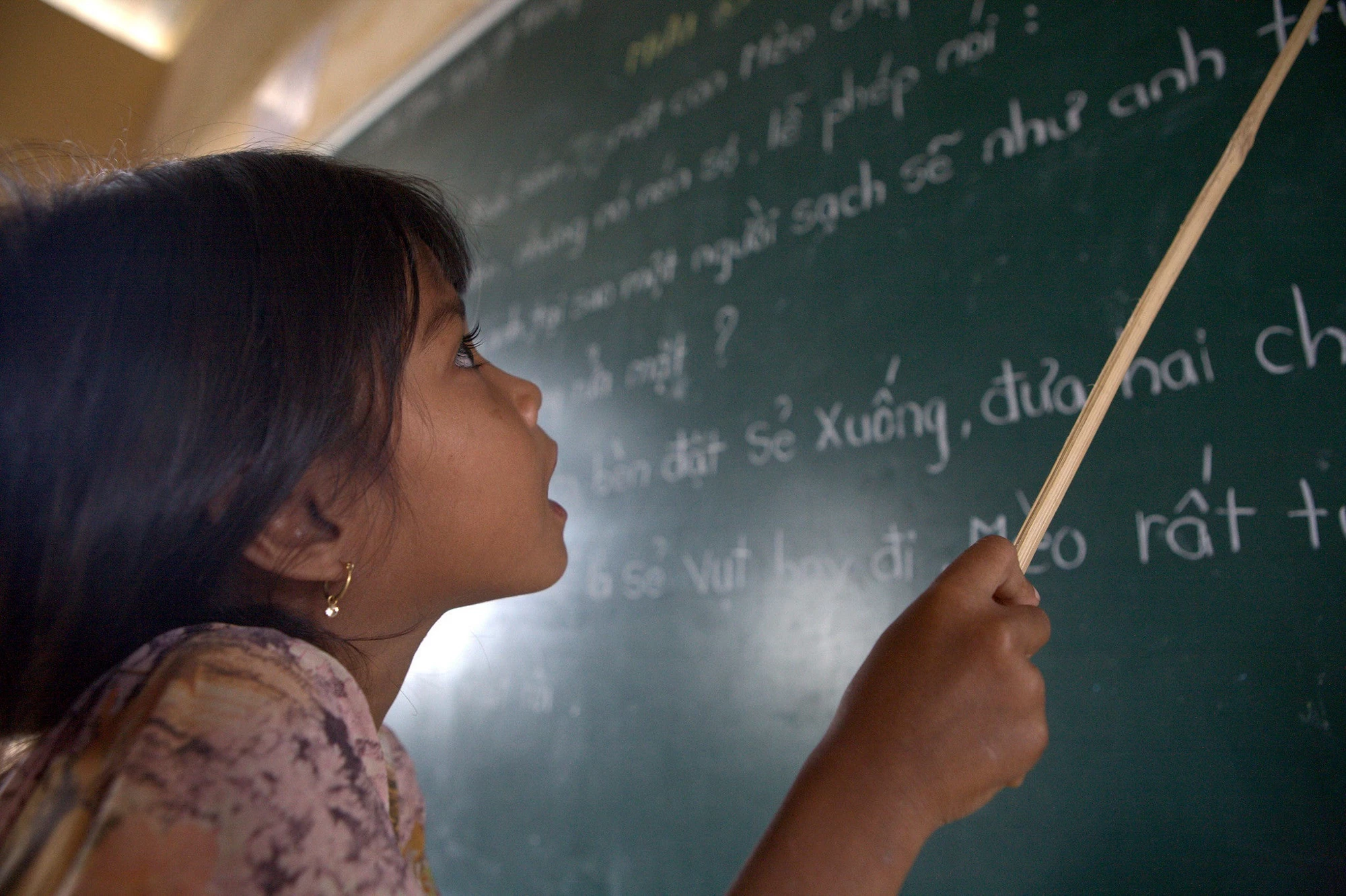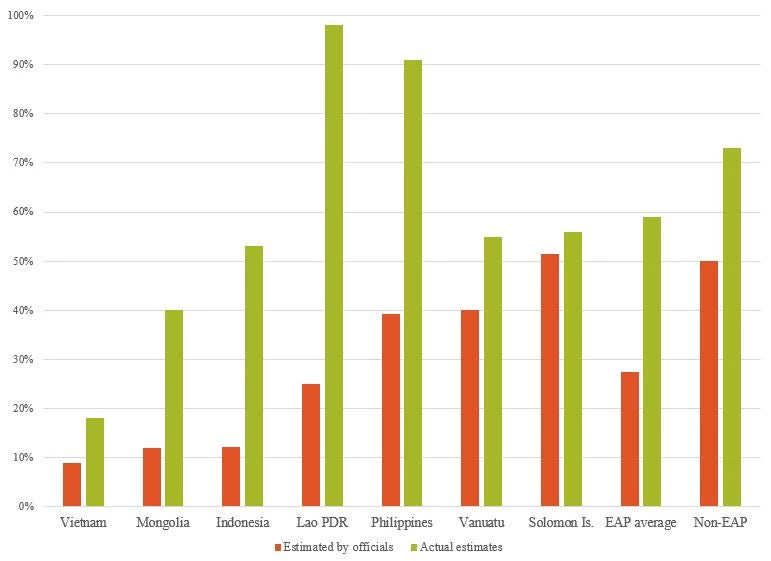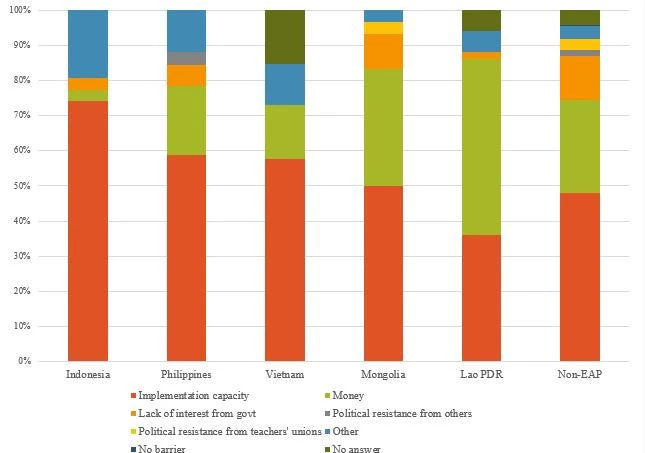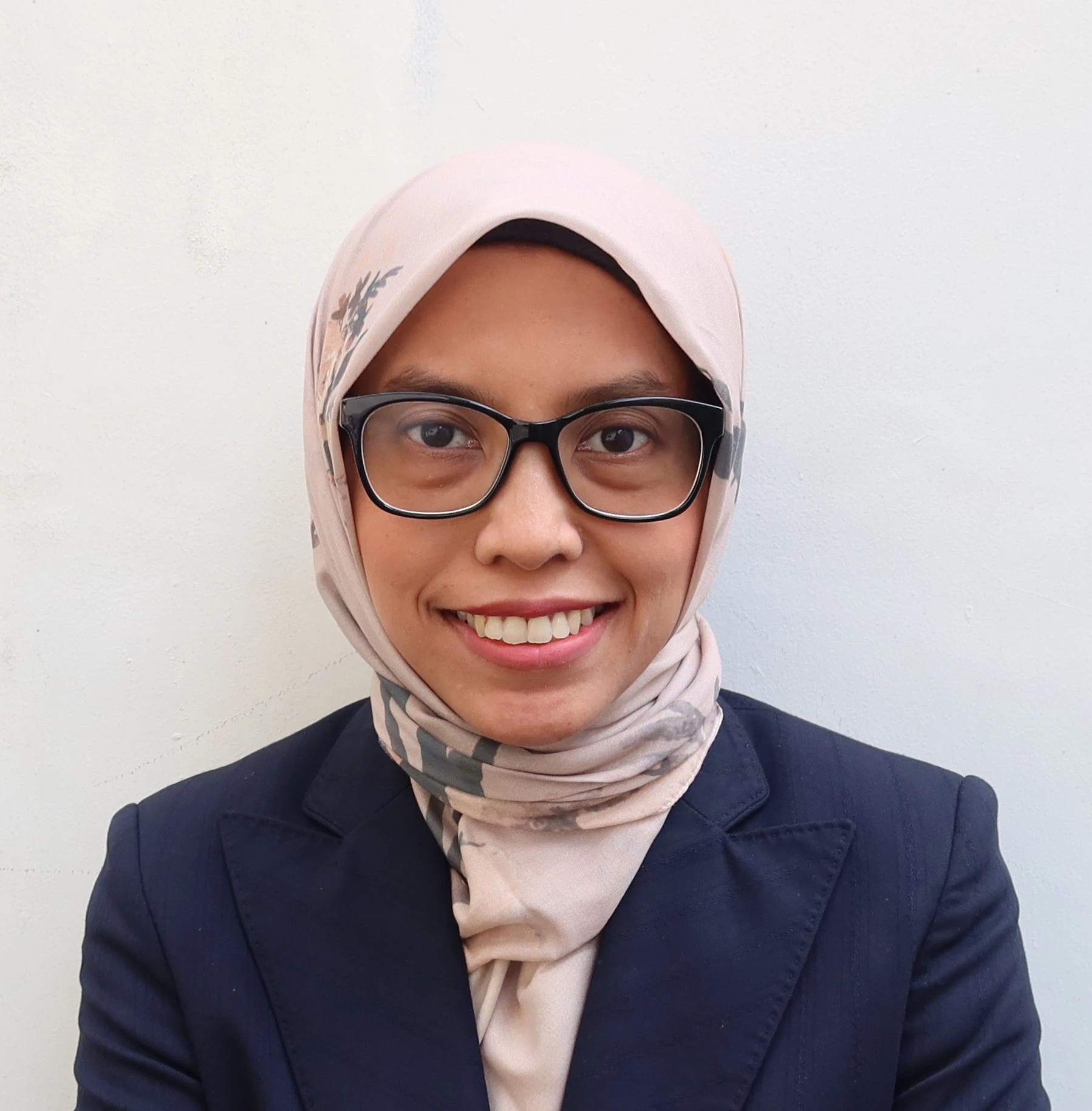 A student of Khmer descent learns Kinh language (the official Vietnamese language) at the Lac Hoa Primary School in Soc Trang province. The report "Vietnam High Education For All by 2020" finds that gaps in learning still exist, particularly between groups of different income levels and between Kinh, Chinese and ethnic minorities. Soc Trang province, Vietnam
A student of Khmer descent learns Kinh language (the official Vietnamese language) at the Lac Hoa Primary School in Soc Trang province. The report "Vietnam High Education For All by 2020" finds that gaps in learning still exist, particularly between groups of different income levels and between Kinh, Chinese and ethnic minorities. Soc Trang province, Vietnam
In seven East Asia and Pacific (EAP) countries, policymakers prioritize secondary school completion over basic learning quality, while underestimating the levels of learning poverty – which measures the share of 10-year-olds who can’t read and understand a simple text – among their students. This oversight can hinder efforts to improve student learning outcomes in the region.
A recent World Bank research paper, titled 'What I Really Want', casts a spotlight on this issue. Surveys carried out in 2020 and 2022 with the collaboration of the Center for Global Development gathered insights from 651 senior public officials, including education and finance officers and lawmakers from 14 middle-income countries across1 the world.
Figure 1: EAP Policy Makers Underestimate Learning Poverty by Large Margins
This research is integral to understanding the policy priorities, beliefs, and values of education sector decision-makers in the seven countries surveyed. The surveys show that EAP officials underestimate learning poverty by an average of 27 percentage points, a larger margin than their global colleagues. This significant margin suggests a regional trend of overlooking the gravity of learning difficulties faced by students, which could have far-reaching implications for educational policy and practice.
Asked to identify the main bottleneck to improving student learning, officials in four of the five EAP countries surveyed in 2022 pointed most often to “lack of implementation capacity.” Those outside of the region hold similar views, with officials in six of seven non-EAP countries surveyed and half of senior officials globally citing the same factor.
Figure 2: Lack of Capacity Is Seen as the Main Barrier to Improved Learning
The survey also reveals a preference among EAP policymakers for increasing secondary school completion rather than improving learning outcomes, with 83% of those surveyed opting for the former. This is at odds with global evidence, which suggests that while both learning and educational attainment are important to foster the high levels of human capital needed to support growth, learning quality is more critical to developing the human capital that is essential for economic growth.
Another mismatch exists between the stated needs of these East Asian policy makers and the assistance that partners are equipped to provide. While both sides agree about the importance of strengthening capacity in education systems, little consensus exists on how to effectively support capacity building for education systems either internally or with international assistance, and how best to measure it.
Despite the mismatch between the perspectives of EAP officials and the global evidence, there is room for alignment and progress. To effect meaningful change, a multifaceted approach is necessary:
- Evaluate capacity constraints across the entire education system (central, district, and school levels) and provide tailored support for improvement
- Identify stakeholders and political actors that are willing and able to support system realignment for learning
- Improve awareness of data—for example, on learning poverty—and of evidence on effective practices not only among policy makers but also among civil society, parents, and other stakeholders to introduce greater accountability into the education system
- Articulate what teachers and systems leaders can do differently, how to do it, and why.
The misalignment between EAP officials and development partners contrast with important areas of alignment. Where strong alignment exists in rhetoric, for example on issues of inclusion of students with disabilities, international partners can work to overcome concerns that hinder action and investment. But for international actors to more effectively support East Asia and Pacific countries identified in the report to achieve improved learning outcomes for all students, it will be important to better align the perspectives and priorities of education policy makers in the region and those of the international community. Otherwise, development partners risk supporting initiatives that are outside of, or even counter to, the priorities of governments.
The 'What I Really Want' report, along with the accompanying 'Fixing the Foundation' regional report, offers a pathway to bridge the gaps and align the priorities of EAP education policymakers and those of the international community. This alignment is vital to ensure that interventions by partners resonate with the needs and objectives of the governments they intend to support and lead to improved outcomes for students in the region.
1 Seven of these countries are within the EAP region: Indonesia, the Philippines, Laos, Vietnam, Mongolia, the Solomon Islands, and Vanuatu. The 2022 survey also polled 601 education policy makers from seven other countries: the Democratic Republic of Congo, Ghana, Peru, Pakistan, Bangladesh, Nigeria, and Uganda.







Join the Conversation